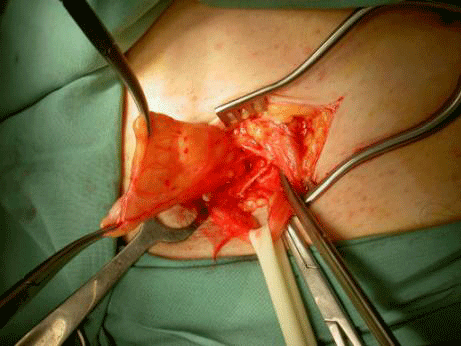|
The use of mesh in hernia repair, risk management and the advantages of day surgery |
||
|
Development of laparoscopic hernia repair
stimulated I believe what could be termed other competitive open
techniques where small incisions were made and mesh has been designed to
place between the layers of the abdominal wall and the peritoneum
through a muscle splitting incision. Types of repair:
B. Open pre-peritoneal mesh placement – (from behind): Increasingly
especially designed meshes usually polypropylene allow the mesh to be
replaced in the deeper plan between the muscles and peritoneum without a
large incision. There
are several proponents of these techniques. One example is a kugel
repair where a compressible mesh is inserted through a small split in
the muscle. The mesh then
regains its shape to form a wide buttress. Another
technique is a Prolene hernia system where a double layer of mesh, an umbrella where a plug is used. Various
combinations are possible. There are two main techniques for placing a mesh
in the layer between the peritoneum and muscle wall. is placed without entering the abdominal cavity, by dissection between the peritoneum and the muscles, often using a large balloon to separate the layers so that the mesh can be placed by stapling into position. |

Operation showing the sac and the cord Both these operations are refinements of the open
extra-peritoneal repair popularised years ago and for which there are
still many proponents. Direct and indirect inguinal hernia There are two basic types but they both protrude
through the external ring of the inguinal canal. The INDIRECT descend along the spermatic cord or
round ligament. The DIRECT bulge through the posterior wall of the
inguinal canal medial to the inferior epigastria artery, posterior to
and separate from the spermatic cord. The indirect occur at any age, from infancy to the
elderly. In children or females the hernia is invariably direct. Direct herniae occur with increasing frequency in
males as they age. The persistence of the processes vaginalis sac at
birth following the descent of the testis results in the development of
indirect herniae in children. This is the congenital type of the sac. With incomplete descent of the testis there is
usually an associated indirect hernial sac. Persistence of a patent process vaginalis is also
responsible for communicating hydroceles of the testis and encysted
hydrococeles of the cord. |
|